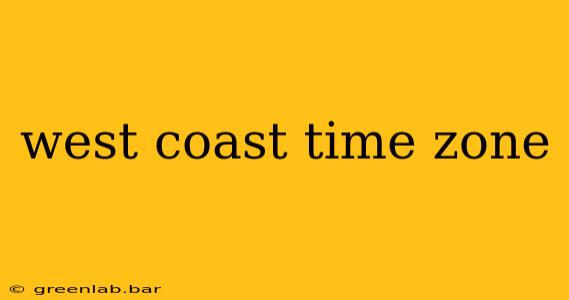The West Coast of the United States, encompassing California, Oregon, Washington, and parts of Idaho and Nevada, operates under several time zones, but it's most commonly associated with Pacific Standard Time (PST) and Pacific Daylight Time (PDT). Understanding these time zones is crucial for anyone interacting with businesses, individuals, or events in this region. This guide dives deep into everything you need to know about West Coast time.
Understanding PST and PDT: The Basics
-
Pacific Standard Time (PST): This is the standard time observed during the fall and winter months. It's 8 hours behind Coordinated Universal Time (UTC), often represented as UTC-8.
-
Pacific Daylight Time (PDT): Observed during the spring and summer months, PDT is one hour ahead of PST. This means it's 7 hours behind UTC (UTC-7). The transition between PST and PDT occurs on the second Sunday in March (spring forward) and the first Sunday in November (fall back), adhering to the U.S. observance of Daylight Saving Time.
Key Considerations When Dealing with West Coast Time
Business Interactions:
For businesses operating across time zones, precise timekeeping is vital. Misunderstandings due to time differences can lead to missed deadlines, scheduling conflicts, and inefficient communication. Always double-check the specific time zone of your West Coast contact to avoid any confusion. Tools like online time zone converters are invaluable in this regard.
Scheduling Events:
Planning meetings, conferences, or other events involving West Coast participants requires careful consideration of time zones. Clearly state the time in both PST/PDT and the relevant time zones of other attendees to ensure everyone is aware of the schedule. This is particularly important for international collaborations.
Online Interactions:
Online forums, social media, and live streaming events often operate on a specific time zone. If participating in activities originating from the West Coast, be mindful of the time difference to ensure timely participation.
Traveling to the West Coast:
When traveling to the West Coast, adjusting to the time difference is crucial. Consider the potential for jet lag and plan your itinerary accordingly. Allow time for your body to adjust, especially for longer flights across multiple time zones.
Beyond PST/PDT: Variations and Considerations
While PST and PDT are dominant, it's important to note that not all of the West Coast strictly adheres to this. Parts of Idaho and Nevada observe Mountain Standard Time (MST) and Mountain Daylight Time (MDT), which are one hour ahead of PST/PDT during their respective periods. Always confirm the specific time zone when dealing with a particular location or individual on the West Coast.
Utilizing Time Zone Tools
Many online resources offer precise time zone converters and world clocks, making it easy to calculate the current time on the West Coast relative to your location. These tools are highly recommended for precise time management across different time zones.
Conclusion: Mastering West Coast Time
Understanding the nuances of the West Coast time zone is essential for effective communication and collaboration. By being aware of PST, PDT, and potential variations, and by utilizing available time zone tools, you can avoid miscommunications and maintain efficient scheduling, regardless of your own location. Accurate timekeeping fosters smooth interactions and strengthens relationships across geographical boundaries.

